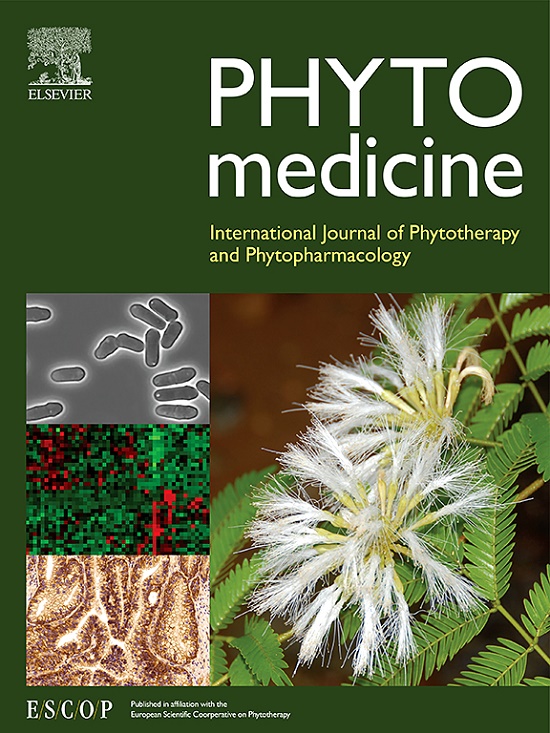Cirsium japonicum leaf extract attenuated lipopolysaccharide-induced acute respiratory distress syndrome in mice via suppression of the NLRP3 and HIF1α pathways
IF 6.7
1区 医学
Q1 CHEMISTRY, MEDICINAL
引用次数: 0
Abstract
Background
Acute respiratory distress syndrome (ARDS) is a severe inflammatory disorder characterized by acute respiratory failure, alveolar barrier dysfunction, edema, and dysregulated alveolar macrophage-mediated pulmonary inflammation. Despite advancements in treatment strategies, the mortality rate in patients with ARDS remains high, ranging from 40–60 %. Current approaches are limited to supportive care, necessitating the exploration of effective therapeutic options such as suppressing broad inflammatory responses. Although Cirsium japonicum leaves possess anti-inflammatory properties, their specific effects on ARDS have not yet been investigated.
Methods
The anti-inflammatory activity of Cirsium japonicum extract (CJE) was investigated in a lipopolysaccharide (LPS)-induced ARDS model.
Results
CJE significantly attenuated LPS-induced lung injury, including reduced alveolar wall thickness, inflammatory cell infiltration, proteinaceous debris, and hyaline membranes. Moreover, CJE repressed infiltration of inflammatory cells and pro-inflammatory gene expression in bronchoalveolar lavage fluid. Concordantly, CJE mitigated alveolar macrophage activation, which consequently reduced neutrophil chemoattractic infiltration. Additionally, CJE suppressed NLRP3 and HIF1α expression in the lungs of the ARDS mouse. Similarly, LPS-induced NLRP3 and HIF1α pathway-associated inflammatory and glycolytic gene expressions significantly diminished by CJE in murine alveolar macrophage cell line, MH-S cells, and bone marrow-derived macrophages.
Conclusion
CJE suppressed multiple inflammatory responses through the regulation of NLRP3 and HIF1α signaling-related gene expression in macrophages of LPS-induced ARDS mice. These results suggest that CJE has therapeutic potential for treating patients with ARDS via macrophage regulation.

求助全文
约1分钟内获得全文
求助全文
来源期刊

Phytomedicine
医学-药学
CiteScore
10.30
自引率
5.10%
发文量
670
审稿时长
91 days
期刊介绍:
Phytomedicine is a therapy-oriented journal that publishes innovative studies on the efficacy, safety, quality, and mechanisms of action of specified plant extracts, phytopharmaceuticals, and their isolated constituents. This includes clinical, pharmacological, pharmacokinetic, and toxicological studies of herbal medicinal products, preparations, and purified compounds with defined and consistent quality, ensuring reproducible pharmacological activity. Founded in 1994, Phytomedicine aims to focus and stimulate research in this field and establish internationally accepted scientific standards for pharmacological studies, proof of clinical efficacy, and safety of phytomedicines.
 求助内容:
求助内容: 应助结果提醒方式:
应助结果提醒方式:


